Posted on December 9th, 2019 by Mary Lord
 Students in grades 6 to 11 explore the practical, scientific, ethical, and environmental issues that emerge in creating “smart” buildings that meld environmentally responsible design with cutting-edge computing technology known as the Internet of Things (IoT). Working in teams, they design and perhaps later implement smart-building solutions to make their school a better place to inhabit.
Students in grades 6 to 11 explore the practical, scientific, ethical, and environmental issues that emerge in creating “smart” buildings that meld environmentally responsible design with cutting-edge computing technology known as the Internet of Things (IoT). Working in teams, they design and perhaps later implement smart-building solutions to make their school a better place to inhabit.
Read More
Filed under: Class Activities, Grades 6-8, Grades 9-12, Lesson Plans | Comments Off on Smart School Building
Tags: careers, civil and environmental engineering, cool, electrical and computer engineering, environment, heat, IEEE, intelligent infrastructure, Internet of Things, LED, light, NGSS, sensors, smart buildings, teachengineering, TryComputing
Posted on December 6th, 2019 by Mary Lord
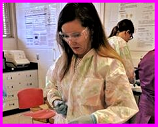 Learn how K-12 teachers across the country are transforming their STEM classes – and themselves – through NSF’s Research Experiences for Teachers in Engineering and Computer Science (RET) program. You, too, can apply to participate!
Learn how K-12 teachers across the country are transforming their STEM classes – and themselves – through NSF’s Research Experiences for Teachers in Engineering and Computer Science (RET) program. You, too, can apply to participate!
Photo: Florida elementary school STEM educator MacKenzie McNickle isolated rat tail collagen in her Read More
Filed under: Class Activities, For Teachers, Grades K-5, K-12 Outreach Programs, Special Features | Comments Off on Learn With Real Engineers This Summer
Tags: Engineering, NSF, Programs for Teachers, Research Experiences for Teachers in Engineering and Computer Science (RET), Resources for Teachers, Teacher Training
Posted on October 21st, 2019 by ASEE
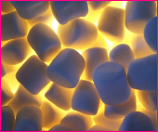 This simple catapult activity for students in grades 4 – 8 teaches them how energy is transferred when a plastic spoon is pulled back, then released, rocketing its payload — a single marshmallow.
This simple catapult activity for students in grades 4 – 8 teaches them how energy is transferred when a plastic spoon is pulled back, then released, rocketing its payload — a single marshmallow.
Read More
Filed under: Class Activities, Grades 6-8, Grades K-5, Grades K-5, Lesson Plans | Comments Off on Activity: Catapult Marshmallow Launch
Tags: catapult, Class Activities, Energy, forces and motion, Fun & Games, Grades 4 - 8, Grades K-5, Newton's Laws, NGSS, Physical Science, Physics, trebuchet
Posted on September 26th, 2019 by Mary Lord
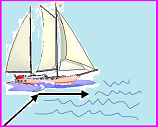 Middle school students learn the concept of dead reckoning by using vectors to plot a course based on a time and speed, then correct their positions with vectors representing winds and currents. Includes a link to related activities on navigation and creating nautical charts.
Middle school students learn the concept of dead reckoning by using vectors to plot a course based on a time and speed, then correct their positions with vectors representing winds and currents. Includes a link to related activities on navigation and creating nautical charts.
Read More
Filed under: Class Activities, Grades 6-8, Lesson Plans | Comments Off on Vector Voyage!
Tags: Aerospace Engineering, Class Activities, Geography, GPS, Grades 6-8, Lesson Plan, Mathematics, nautical charts, naval engineering, navigation, Physics, teachengineering, vectors
Posted on September 23rd, 2019 by ASEE
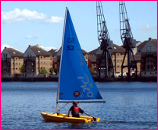 In this lesson, students in grades 2 – 7 use simple materials to design and make model sailboats that must stay upright and sail straight in a testing tank. They will learn the basic components of a ship and how design represents a tradeoff between speed, stability, and ease of handling.
In this lesson, students in grades 2 – 7 use simple materials to design and make model sailboats that must stay upright and sail straight in a testing tank. They will learn the basic components of a ship and how design represents a tradeoff between speed, stability, and ease of handling.
Read More
Filed under: Class Activities, Grades 6-8, Grades 6-8, Grades K-5, Grades K-5, Lesson Plans | 1 Comment »
Tags: buoyancy, Class Activities, Lesson Plan, Ocean, sailboat, wind power
Posted on September 4th, 2019 by Mary Lord
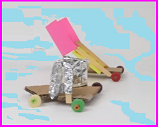 Elementary students learn about wind and kinetic and renewable energy while following the steps of the engineering design process to imagine, create, test, evaluate, and refine small, wind-powered sail cars built from limited quantities of drinking straws, masking tape, paper, and beads. Teams of two then compete to see which sail-car travels the farthest when pushed by the wind (simulated by the use of an electric fan).
Elementary students learn about wind and kinetic and renewable energy while following the steps of the engineering design process to imagine, create, test, evaluate, and refine small, wind-powered sail cars built from limited quantities of drinking straws, masking tape, paper, and beads. Teams of two then compete to see which sail-car travels the farthest when pushed by the wind (simulated by the use of an electric fan).
Note: This NGSS-aligned activity is part of a unit in which multiple activities are brought together for an all-day school/multi-school concluding “engineering field day” competition.
Read More
Filed under: Class Activities, Grades K-5, Lesson Plans | Comments Off on Wind-Powered Sail Cars
Tags: Class Activities, Competitions for Students, Engineering Design Process, Grades K-5, Lesson Plan, sail cars, teachengineering, wind power
Posted on August 31st, 2019 by Mary Lord
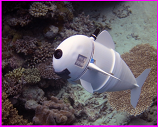 Middle school students take on the role of marine biologists to investigate how sharks move in three-dimensional space (3-D). Understanding the mathematics behind shark movement will inform the design of a prototype joystick for a robotic exploration shark used to collect oceanic data.
Middle school students take on the role of marine biologists to investigate how sharks move in three-dimensional space (3-D). Understanding the mathematics behind shark movement will inform the design of a prototype joystick for a robotic exploration shark used to collect oceanic data.
Read More
Filed under: Class Activities, Grades 6-8, Lesson Plans | Comments Off on Move Like a Shark
Tags: 3-D motion, Aeronautics, Cartesian coordinates, Class Activities, drag, forces, Grades 6-8, Lesson Plan, programming, shark movement, speed, x, y, z axes
Posted on August 5th, 2019 by Mary Lord
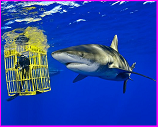 Students in grades 2 to 5 are introduced to the dangerous work of scientists who study great white sharks. They work in engineering teams to select appropriate materials from a makers pace to design a shark cage that will help a diver submerge safely into a tank of sharks.
Students in grades 2 to 5 are introduced to the dangerous work of scientists who study great white sharks. They work in engineering teams to select appropriate materials from a makers pace to design a shark cage that will help a diver submerge safely into a tank of sharks.
Photo from U.S. Fish and Wildlife Service
Read More
Filed under: Class Activities, Grades K-5, Lesson Plans | Comments Off on Diving into the Maker Space – with Sharks!
Tags: Class Activities, diving cage, Grades K-5, Maker Space, ORISE Oak Ridge Institution for Science and Education, Shark
Posted on July 8th, 2019 by Mary Lord
 If you were an engineer or scientist, what would you wear to work? That’s the fascinating focus of Scientists Get Dressed, a new STEM-themed children’s book by award-winning author Deborah Lee Rose. The book, available this fall, includes an NGSS-aligned STEM activity called the Scientists’ Glove Challenge.
If you were an engineer or scientist, what would you wear to work? That’s the fascinating focus of Scientists Get Dressed, a new STEM-themed children’s book by award-winning author Deborah Lee Rose. The book, available this fall, includes an NGSS-aligned STEM activity called the Scientists’ Glove Challenge.
Read More
Filed under: Class Activities, For Teachers, K-12 Education News, Special Features, Web Resources | Comments Off on Scientists Suit Up
Tags: Aerospace, Aerospace Engineering, astronaut, Best STEM Books, Class Activities, Deborah Lee Rose, marine biology, polar research, Resources for Teachers, Scientists Get Dressed, Scientists' Glove Challenge, STEM education
 Students in grades 6 to 11 explore the practical, scientific, ethical, and environmental issues that emerge in creating “smart” buildings that meld environmentally responsible design with cutting-edge computing technology known as the Internet of Things (IoT). Working in teams, they design and perhaps later implement smart-building solutions to make their school a better place to inhabit.
Students in grades 6 to 11 explore the practical, scientific, ethical, and environmental issues that emerge in creating “smart” buildings that meld environmentally responsible design with cutting-edge computing technology known as the Internet of Things (IoT). Working in teams, they design and perhaps later implement smart-building solutions to make their school a better place to inhabit.








 Learn how K-12 teachers across the country are transforming their STEM classes – and themselves – through NSF’s Research Experiences for Teachers in Engineering and Computer Science (RET) program. You, too, can apply to participate!
Learn how K-12 teachers across the country are transforming their STEM classes – and themselves – through NSF’s Research Experiences for Teachers in Engineering and Computer Science (RET) program. You, too, can apply to participate! This simple catapult activity for students in grades 4 – 8 teaches them how energy is transferred when a plastic spoon is pulled back, then released, rocketing its payload — a single marshmallow.
This simple catapult activity for students in grades 4 – 8 teaches them how energy is transferred when a plastic spoon is pulled back, then released, rocketing its payload — a single marshmallow. Middle school students learn the concept of dead reckoning by using vectors to plot a course based on a time and speed, then correct their positions with vectors representing winds and currents. Includes a link to related activities on navigation and creating nautical charts.
Middle school students learn the concept of dead reckoning by using vectors to plot a course based on a time and speed, then correct their positions with vectors representing winds and currents. Includes a link to related activities on navigation and creating nautical charts. In this lesson, students in grades 2 – 7 use simple materials to design and make model sailboats that must stay upright and sail straight in a testing tank. They will learn the basic components of a ship and how design represents a tradeoff between speed, stability, and ease of handling.
In this lesson, students in grades 2 – 7 use simple materials to design and make model sailboats that must stay upright and sail straight in a testing tank. They will learn the basic components of a ship and how design represents a tradeoff between speed, stability, and ease of handling. Elementary students learn about wind and kinetic and renewable energy while following the steps of the engineering design process to imagine, create, test, evaluate, and refine small, wind-powered sail cars built from limited quantities of drinking straws, masking tape, paper, and beads. Teams of two then compete to see which sail-car travels the farthest when pushed by the wind (simulated by the use of an electric fan).
Elementary students learn about wind and kinetic and renewable energy while following the steps of the engineering design process to imagine, create, test, evaluate, and refine small, wind-powered sail cars built from limited quantities of drinking straws, masking tape, paper, and beads. Teams of two then compete to see which sail-car travels the farthest when pushed by the wind (simulated by the use of an electric fan). Middle school students take on the role of marine biologists to investigate how sharks move in three-dimensional space (3-D). Understanding the mathematics behind shark movement will inform the design of a prototype joystick for a robotic exploration shark used to collect oceanic data.
Middle school students take on the role of marine biologists to investigate how sharks move in three-dimensional space (3-D). Understanding the mathematics behind shark movement will inform the design of a prototype joystick for a robotic exploration shark used to collect oceanic data. Students in grades 2 to 5 are introduced to the dangerous work of scientists who study great white sharks. They work in engineering teams to select appropriate materials from a makers pace to design a shark cage that will help a diver submerge safely into a tank of sharks.
Students in grades 2 to 5 are introduced to the dangerous work of scientists who study great white sharks. They work in engineering teams to select appropriate materials from a makers pace to design a shark cage that will help a diver submerge safely into a tank of sharks. If you were an engineer or scientist, what would you wear to work? That’s the fascinating focus of Scientists Get Dressed, a new STEM-themed children’s book by award-winning author Deborah Lee Rose. The book, available this fall, includes an NGSS-aligned STEM activity called the Scientists’ Glove Challenge.
If you were an engineer or scientist, what would you wear to work? That’s the fascinating focus of Scientists Get Dressed, a new STEM-themed children’s book by award-winning author Deborah Lee Rose. The book, available this fall, includes an NGSS-aligned STEM activity called the Scientists’ Glove Challenge.